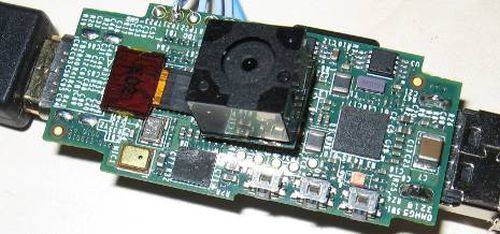Raspberry Pi is a tiny ARM-based single board computer that enables a TV to run Linux and scripting languages such as Python.
Designed by Cambridge business men and academics to engage children with computer science and thereby improve the skills pool from which they draw employees and undergraduates, it is causing a stir in the developing world.
“In 1996, the average skill set of someone entering university was a couple of machine code languages and some hardware hacking experience. Now if we have someone that has written a web page we are lucky,” former University of Cambridge lecture Dr Eben Upton told Electronics Weekly.
Upton now works for a high-tech company in the same area and employs graduates:
“There are still bright kids around, but you have to find a general purpose smart person who would otherwise work for a bank, and then train them from scratch as an engineer,” he said.
Upton and five others have decided to do something about it – get them young.
“We all had that sinking feeling, that you look at any trend going in to the skills pipeline the numbers don’t look great,” he said. “Most of the factors, we can’t do anything about, so we did the one thing we could do something about and made a machine that is cheap and programmable. If someone has been programming since they were eight, they have experience baked in.”
The inspiration for Raspberry Pi comes from the pre-PC computers of the 80s, which encouraged people to programme, even when they didn’t know they wanted to.
“There is an energy barrier at the start of the learning curve,” said Upton. With the Spectrum or the BBC micro, even if you only wanted it to run a game, you turned it on and it immediately said ‘BASIC’ and you could write
>10 print “Hello world”
>20 goto 10.
A lot of us got sucked in by that and became programmers.”
PCs just don’t cut the mustard.
“Machines now start up in Windows and if you want to programme you have to go and get some tools, which you have to know how to look for,” he explained. “Its not trivial, and if its not trivial, 99% of people won’t do it
The result is a 32-bit ARM11-based computer than needs no supporting PC.
For More Detail : In depth: Raspberry Pi, the computer on a stick


